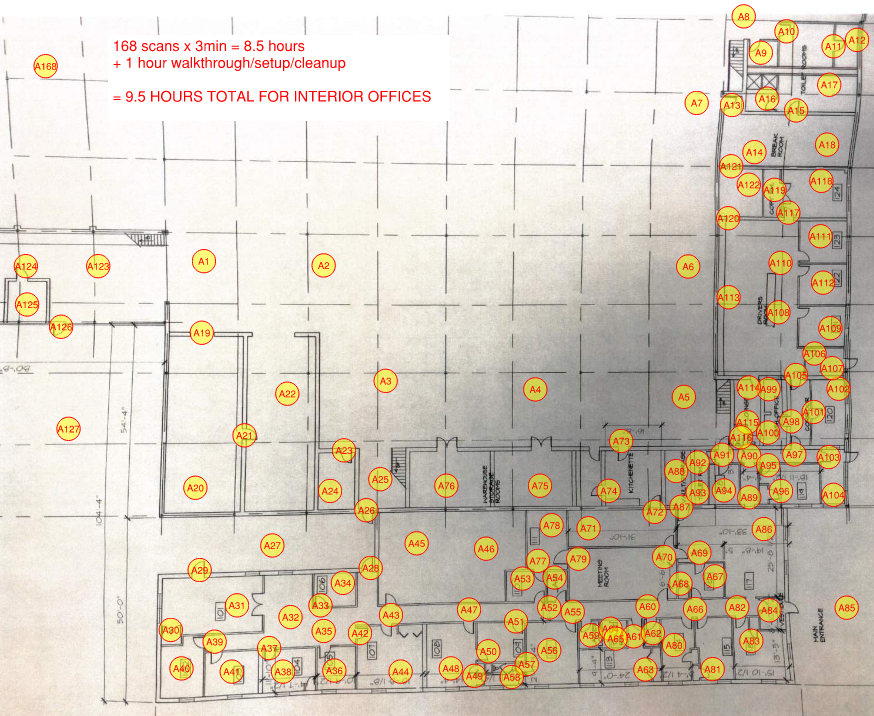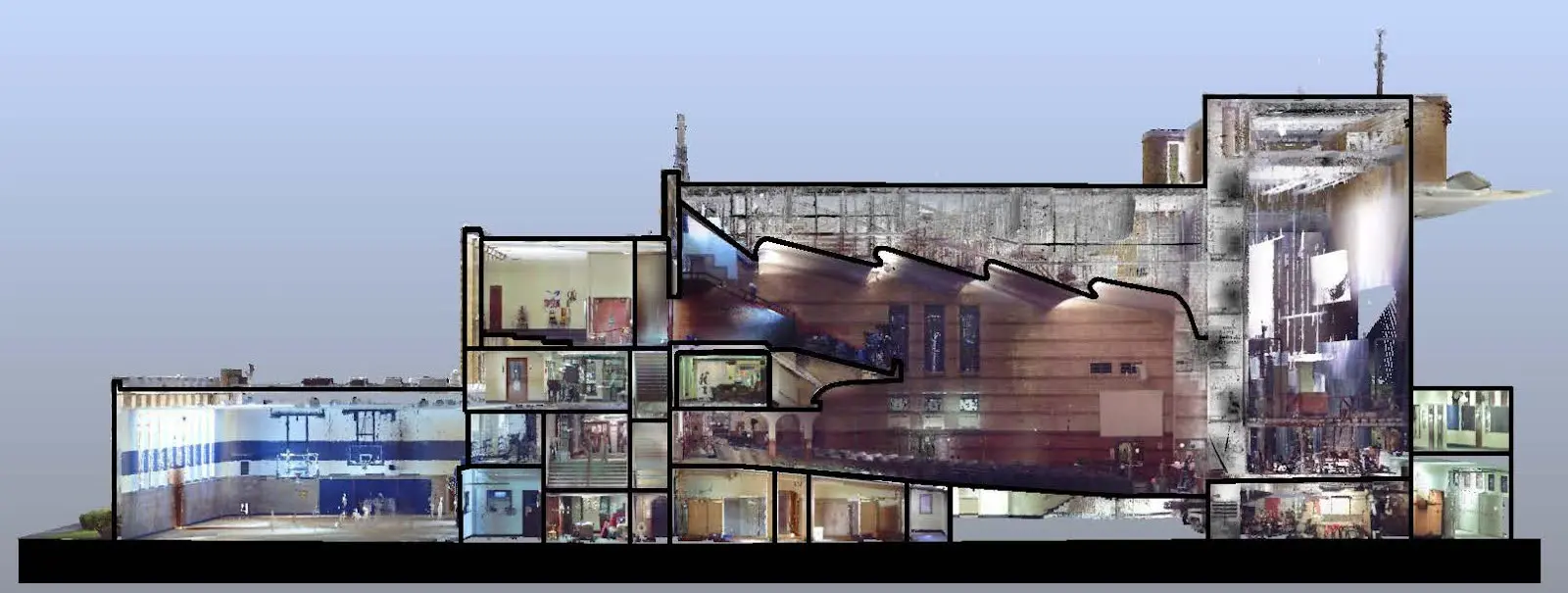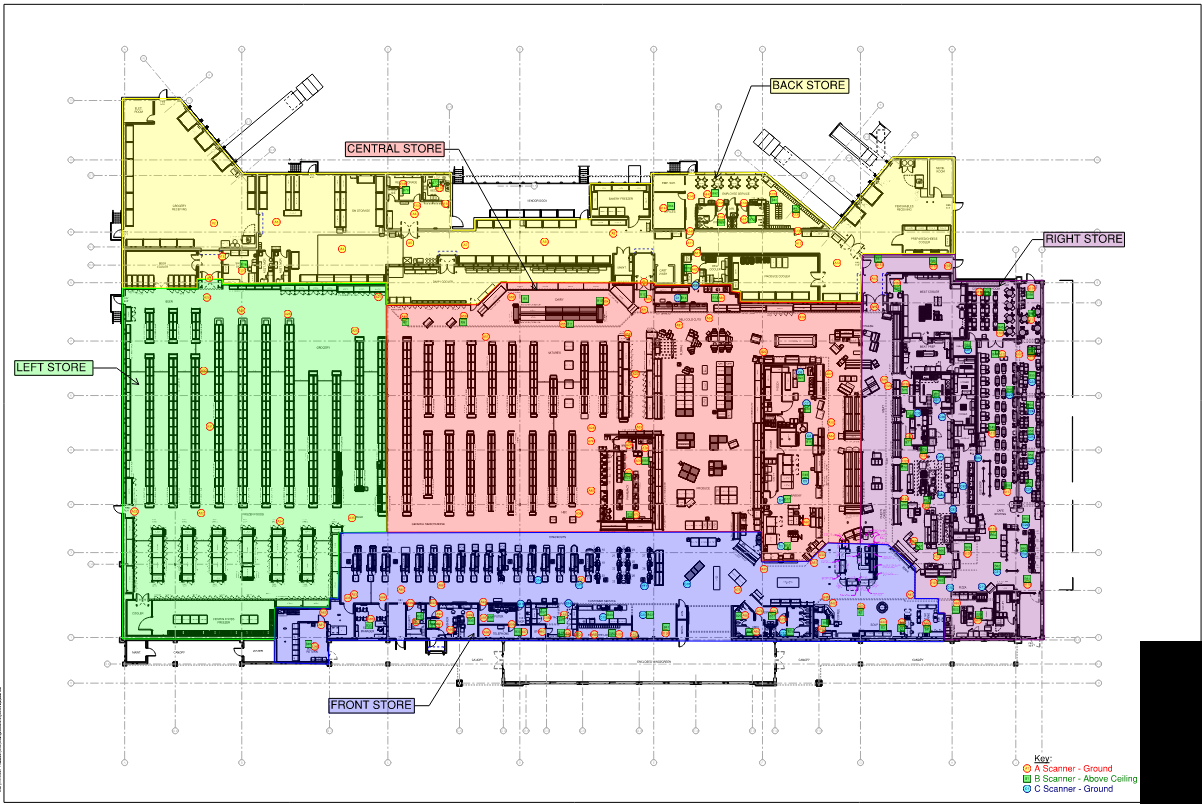Scan-to-BIM technology has revolutionized the construction and architectural industries by providing detailed, accurate 3D models that are vital for everything from initial designs to complex renovations. However, large-scale Scan-to-BIM projects require more than just technical expertise—they demand careful planning, clear communication, and an adaptable approach.
Samantha Houk, Director of Scan-to-BIM Services at Hale Technology in Practice, recently shared her expert insights on how to manage such projects successfully. Below are her key takeaways, best practices, and lessons learned over the course of her 14-year career in the AEC space.
1. Thorough Planning is Crucial
At the heart of any successful large-scale Scan-to-BIM project is meticulous planning. Houk emphasized that, “the planning phase is essential, and the more details you cover in advance, the smoother the execution will be.” This means not only ensuring that all necessary equipment and technology are ready but also gathering all available documentation—such as floor plans, ceiling plans, and other architectural resources—to accurately estimate the scope and resources needed for the project.

A floorplan labeled with the number of setups required for scanning and data collection.
An important aspect of this phase is identifying potential project constraints. Large buildings, particularly older or repurposed ones, often come with challenges such as restricted access or hazardous materials that can complicate the scanning process. Anticipating these issues in the planning stage allows teams to devise contingency plans and avoid disruptions during execution.
2. Ask the Right Questions
Before beginning the technical work, it is essential for project leaders to understand the client’s ultimate goals. Houk pointed out that “understanding the end goal for the data” is critical. The intended use of the model—whether for mechanical systems, structural modifications, or architectural designs—will dictate the type of scanning and modeling required.
Additionally, it’s vital to ask about specific project restrictions, such as building safety protocols, access limitations, and even the preferred scanning schedule to minimize disruptions. Questions like “Is there a required safety orientation? What PPE is needed? Are there any security restrictions?” help clarify these details in advance, preventing delays and ensuring smoother operations once the project is underway.
3. Optimize Field Operations
Efficiency is key when managing large-scale Scan-to-BIM projects, particularly during fieldwork. According to Houk, teams need to be carefully coordinated to maximize productivity. One example she provided is pairing workers for above-ceiling scans. “You need two people—one to manage the tiles and one to handle the scanner,” she explained. This simple adjustment helps streamline the scanning process, saving time and reducing errors.
Field teams must also remain flexible and adaptable to changing conditions on-site. As unforeseen challenges often arise, maintaining open communication between field teams and project managers is crucial. This approach enables quick adjustments and keeps the project moving forward efficiently, minimizing downtime and ensuring that all areas of the project stay on track.

Cross-sectional laser scan of a multi-use building reveals detailed interior spaces, including a gym, auditorium, and backstage areas.
4. Track Your Data and Stay Organized
Managing and organizing large amounts of data is one of the most significant challenges in large-scale Scan-to-BIM projects. Houk’s team uses detailed scan maps to keep track of every scan, ensuring that no areas are missed. “It sounds tedious, but it’s very important,” she said, stressing the importance of documenting each scan and target board to avoid missing any details.
This meticulous approach to data organization is a critical part of successful project management. In large-scale projects, multiple teams often work across different areas simultaneously, making it essential to centralize data management to maintain clarity and prevent miscommunication. Regular data reviews throughout the project help identify potential issues early on, ensuring that any corrections are made before final delivery.

Point cloud scan captures detailed exterior of a historic Tudor-style building and its surrounding grounds.
5. Have a Clear Data Registration Strategy
Registering and stitching together data from multiple scans can be one of the most complex aspects of large-scale Scan-to-BIM projects. Houk recommends a modular approach, stating, “It really becomes a conglomerate of lots of little projects that you end up bringing together.” Breaking down the project into smaller, more manageable clusters allows for greater focus and reduces errors during the registration process.
This method is particularly beneficial for complex structures, where maintaining accuracy in data alignment is critical. By treating each area as an individual project within the larger whole, teams can maintain high levels of quality control and avoid being overwhelmed by the sheer scale of the project.

Multi-level elevation study visualizes floor flatness and height variations across a scanned historic building using colorized point cloud data.
6. Effective Client Communication and Delivery
Delivering large datasets in a clear and usable format is another key aspect of successful Scan-to-BIM projects. Houk emphasized the importance of understanding what the client intends to do with the data: “Knowing what they want to do with the data is really important. Are they going to model from it? Are they bringing it into Revit?” Ensuring that the data is delivered in a format that aligns with the client’s software and workflow is essential for preventing miscommunication and ensuring client satisfaction.
In addition to technical delivery, Houk recommends conducting a final meeting with the client to walk them through the delivered data. This helps to ensure that the client fully understands how to use the data and that their expectations are met. Such clear communication during the final stages of the project fosters trust and can lead to future collaborations.

Architectural diagram showing the compartmentalization of a large building into functionally distinct zones, including Left Store, Front Store, Central Store (divided into two sections by color), Right Store, and Back Store. The map also pinpoints the locations of ground-level and above-ceiling scanners, crucial for internal systems.
The Big Takeaway?
Large-scale Scan-to-BIM projects require more than just technical know-how; they demand strategic planning, adaptability, and strong communication. By applying the best practices outlined by Samantha Houk, teams can navigate the complexities of large-scale projects with confidence, ensuring efficiency, accuracy, and client satisfaction. Whether it’s through meticulous planning, organized data management, or clear client communication, these approaches are essential for achieving successful outcomes. As the industry continues to evolve, these foundational principles will remain vital for delivering exceptional Scan-to-BIM services, regardless of project size or complexity.
About the Author
Samantha Houk
Director of Scan-to-BIM Services, Hale Technology in Practice
Samantha Houk is a recognized leader in the AEC industry with over 14 years of experience specializing in laser scanning, BIM workflows, and reality capture technologies. As the Director of Scan-to-BIM Services at Hale Technology in Practice (Hale TIP), she helps clients navigate the complexities of as-built documentation, point cloud processing, and model creation to support accurate and efficient project execution.
A sought-after speaker, Samantha has presented at industry-leading events such as Geo Week, where she shared best practices for large-scale laser scanning projects, and Trimble Dimensions, where she discussed project survey control for virtual construction and field layout. She has also contributed her expertise as a panelist on as-built documentation best practices.
Samantha is one of fewer than 700 professionals to hold the AGC Certificate of Management in Building Information Modeling (CM-BIM), a credential recognizing deep knowledge of BIM adoption, practice, and process transformation. With her extensive field experience and strategic insights, she is committed to advancing the industry through innovation, education, and the continuous improvement of scan-to-BIM methodologies.
